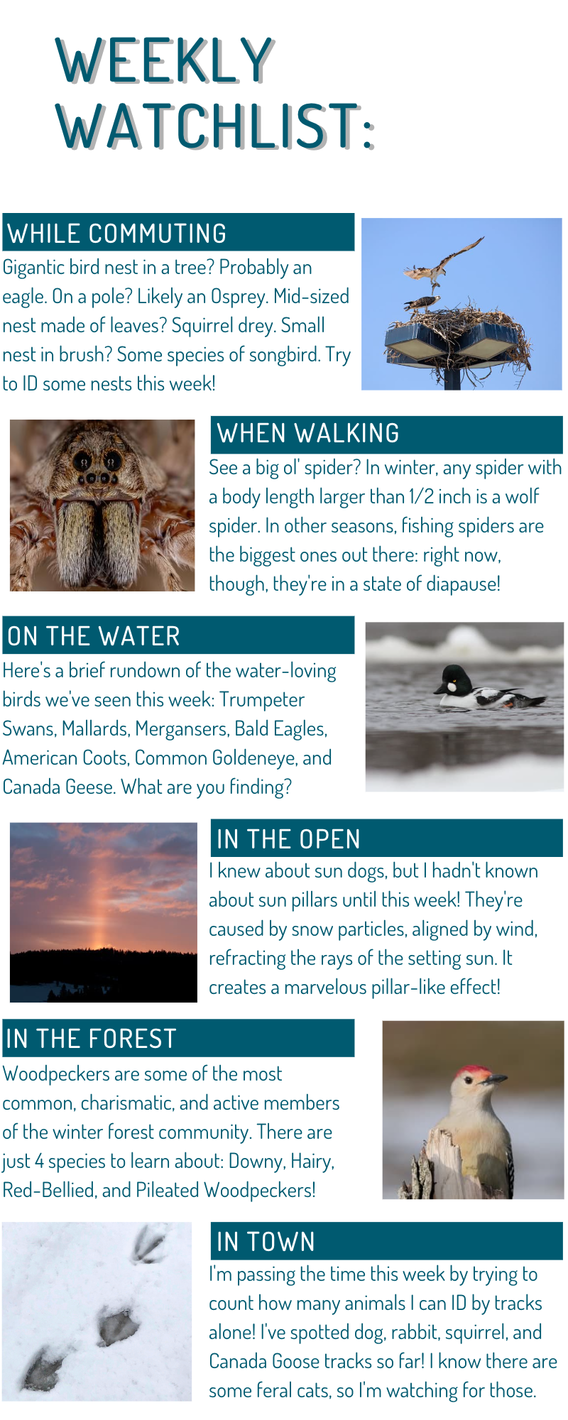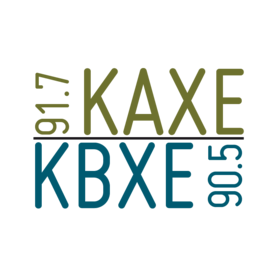Featured resource:
One way to understand phenology is through the news. Two recent stories illustrate how natural cycles are tied to climate, and how organisms might be adapting their phenology as the climate changes.
Minnesota: 'Just a teeny little trickle': Checking in on maple syrup flows in unusually warm January (MPR, January 31, 2024)
Global: Warm weather keeps migratory cranes in Hungary longer (Reuters, November 2, 2023)
Social context for place-based learning:
Season Watch offers phenology as a lens for understanding Minnesota. A recommended complementary resource is "Sites of Resistance and Resilience in the Twin Cities," which uses social justice as a lens for understanding this place.
Understand Native Minnesota (understandnativemn.org) shares accurate information through a dedicated campaign in Minnesota’s K-12 education system to improve younger generations’ understanding of the state’s tribes and Native peoples. Their work includes research, educator academies, and publications for educators seeking standards-based teaching resources. Their latest publications include:
- A Guide to Reliable Native American-Related Teaching Resources (Odia Wood-Krueger 2024)
- Minnesota Native American Essential Understandings for Educators (© Shakopee Mdewakanton Sioux Community 2024)
Glossary:
- Nature's Notebook publishes a glossary defining phenology terms and concepts.
Curricula and lesson plans:
- Driven to Discover Citizen Science: Phenology and Nature's Notebook by University of Minnesota Extension (2018). Download a PDF from this page.
- "Explorer" series (2015) by Minnesota Master Naturalists for Fall, Winter, and Spring
- Phenology: A Place-based Study to Understand Climate Change. A teaching unit published by CLEAN (2021), a hub for education resources committed to climate and energy education funded by grants from the National Oceanic and Atmospheric Administration, the National Science Foundation, the Department of Energy, and NASA.
- Signs of the Seasons: A New England Phenology Program has compiled a list of lesson plans, available here.
Nature's Notebook Education
Articles:
- An illustrated guide to the signs of Minnesota fall by Greta Kaul, MinnPost (2019)
- An illustrated guide to the signs of Minnesota spring by Greta Kaul, MinnPost (2019)
- An illustrated guide to the signs of Minnesota summer by Greta Kaul, MinnPost (2019)
- Local Phenology Tracks Climate Change. An article by Stephan Carlson (PhD) appearing in Legacy (July-August 2020), published by the National Association for Interpretation.
- Nature's Calendar article by Dawn Flinn, with teacher's guide (2007)
- Ojibwe Lifeways article by Anton Treuer, with teacher's guide (2012)

The Weekly Watchlist (shown here) is one of several perks readers receive in the Season Watch Newsletter.
This newsletter is written and distributed by Northern Community Radio, a Season Watch partner organization.

Visit kaxe.org/podcast/phenology for an archive of phenology content (radio programs, newsletters, and more).
Visit kaxe.org/nature for local nature news, interviews with scientists, and series on local conservation topics.
The Dakota and Anishinaabe were among the earliest people to understand Minnesota's biodiversity in relation to climate and seasons. However, Indigenous phenological knowledge is not covered on this website. Below are a few relevant resources, with an emphasis on Indigenous authorship whenever possible:
Ecological knowledge & Understanding Native Minnesota
Understanding Native Minnesota grants fund the following projects, relevant to the topic of phenology and Minnesota ecology:
- Wakaŋ Tipi Awaŋyaŋkapi is developing K-12 curriculum, teaching materials and exhibits for the Wakaŋ Tipi Center to be opened in 2025.
- The Bell Museum is developing field trip offerings for grades 2-5 focused on traditional Indigenous ecological and astronomical knowledge.
- Wolf Ridge Environmental Learning Center is developing and integrating Dakota and Ojibwe content into the curricula of its programming for outdoor school groups and educators.
- Development and distribution of teaching resources and professional development on Indigenous fire practices and culture, including a book giveaway of the forthcoming book “Wildfire: The Culture, Science, and Future of Fire” in partnership with the Minnesota Science Teachers Association.
Community networks:
- In addition to information about their mission-based work, newsletters from Wakan Tipi Center and Dream of Wild Health often share phenological knowledge. These are just two of many examples.
- Indigenous Phenology Network, a grassroots organization. Connect with them:
- on Facebook: https://www.facebook.com/IndigenousIPN/
- or through Nature's Notebook: https://www.usanpn.org/nn/indigenous-phenology-network
Anishinaabe:
- Braiding Sweetgrass: Indigenous Wisdom, Scientific Knowledge, and the Teaching of Plants, book by Robin Wall Kimmerer (2015)
- Braiding Sweetgrass for Young Adults: Indigenous Wisdom, Scientific Knowledge, and the Teaching of Plants, book by Robin Wall Kimmerer and Monique Gray Smith, illustrations by Nicole Neidhardt (2022)
- Nando-gikenimindwaa Nindinawemaaganidog: Getting to know all of creation
- Ojibwe Lifeways article by Anton Treuer, with teacher's guide (2012)
- Our Knowledge Is Not Primitive: Decolonizing Botanical Anishinaabe Teachings, book by Wendy Makoons Geniusz (2009)
- Plants Have So Much to Give Us, All We Have to Do Is Ask: Anishinaabe Botanical Teachings, book by Mary Siisip Geniusz (2015)
Dakota:
- Dakota Moons, an article from Hoċokata Ti Cultural Center's newsfeed
- Owámniyuomni ed Wathóthoka kiŋ is a StoryMap about several plants important to Dakota people. Although this resource does not focus on phenology, seasonal timing has always been an important aspect of relationships between plants and people.
Academic writing:
- Indigenous Phenology: An Interdisciplinary Case Study on Indigenous Phenological Knowledge on the Menominee Nation Forest, a Masters thesis by Thomas Kenote (2020)
Phenology is integrally linked to climate, and therefore to climate change. Although the Season Watch website does not have a section dedicated to this topic, several relevant resources are listed below:
- Cold winter temperature can accelerate the timing of spring budbreak. Synopsis of a journal publication by Claudia Nanninga, Chris R Buyarski, Andrew M Pretorius, Rebecca A Montgomery (2017) in Tree Physiology 37: 1727–1738.
- Driven to Discover Citizen Science: Phenology and Nature's Notebook. A curriculum guide by University of Minnesota Extension (2018). Download a PDF from this page. See Lesson 3 on phenology and climate change
- Explainer: why phenology is key in tracking climate change. Article by Jennifer Fitchett (2019) published in the online magazine, The Conversation
- Frontiers 2022: Noise, Blazes and Mismatches. A publication by United Nations Environment Programme (2022) describing three emerging environmental threats. See Chapter 3 on phenology.
- Local Phenology Tracks Climate Change. An article by Stephan Carlson (PhD) appearing in Legacy (July-August 2020), published by the National Association for Interpretation.
- Phenology: A Place-based Study to Understand Climate Change. A teaching unit published by CLEAN (2021), a hub for education resources committed to climate and energy education funded by grants from the National Oceanic and Atmospheric Administration, the National Science Foundation, the Department of Energy, and NASA.
- Spring is arriving earlier across the US, and that’s not always good news. Article by Theresa Crimmins (2020) published in the online magazine, The Conversation.